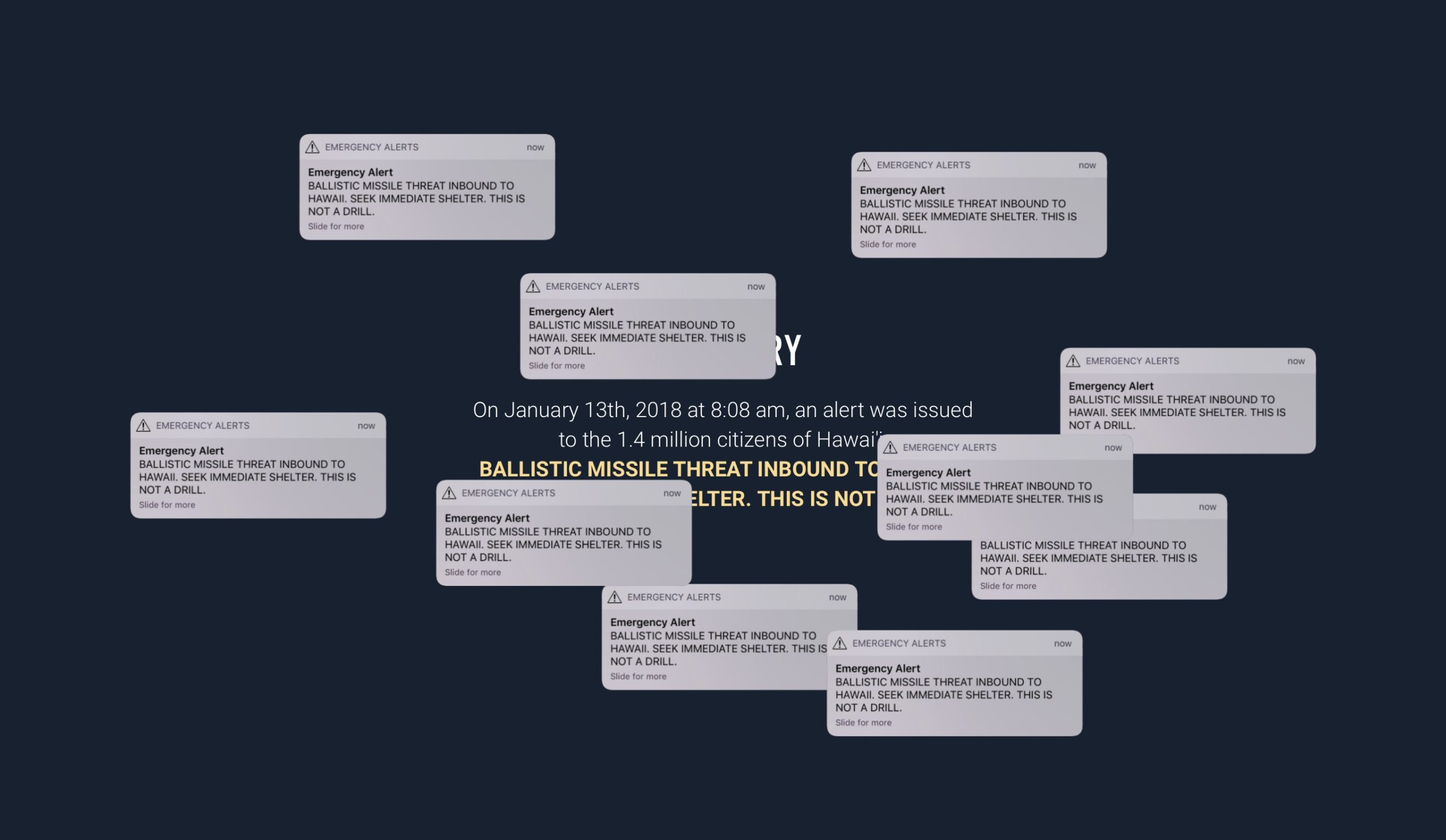Jan. 13, 2018. 8.08 a.m. That morning, 1.4 million citizens of Hawaii received an emergency alert on their cell phones. It read: “BALLISTIC MISSILE THREAT INBOUND TO HAWAII. SEEK IMMEDIATE SHELTER. THIS IS NOT A DRILL.”
Despite the fact that I’ve been working as a Ukrainian foreign policy journalist for the last 13 years, I didn’t know about this case until we visited Lindquist Center at the University of Iowa. Here for the first time in my life I watched a documentary in virtual reality glasses: “On the Morning You Wake (to the end of the world).”
The documentary tells about the 38 minutes of horror for 1.4 million Hawaiians after they received that emergency alert about the risk of a ballistic missile attack. It took around 38-40 minutes for officials to issue that it was a false threat. It was a mistake made by one of the Hawaii Emergency Management Agency workers. Later a state investigation called this case “a combination of human error and inadequate safeguards.” Some of this agency’s CEOs resigned.
But on that day in January 2018, people were very scared. During these years the North Korean crisis gained momentum. Pyongyang had already conducted some intercontinental ballistic missile tests and constantly threatened to attack the U.S. with nuclear weapons. And the “On the morning you wake” documentary that I watched in virtual reality glasses was full of comments of citizens of Hawai. They were scared about the risk of North Korean nuclear missile strike. They didn’t know what to do, where to run, where to seek shelter or a basement. Some of them even called their relatives and friends to say goodbye to life.
But don’t forget that I’m from Ukraine. For almost three years now, a ballistic missile threat is not a virtual reality described in a documentary. All my WPI colleagues already know this emergency alert sound on my phone, which turns on every time an air alert is announced in Kyiv because of Russian missile and drone strike threats. I wish they never knew the sounds of real explosions during war times. And what is described in this documentary about Hawaii in 2018 is happening right now in real life. But in another part of the world – in Europe – in Ukraine.
However, there are some things that surprised and even puzzled me in this documentary, both as a Ukrainian and as a journalist.
First. Ukrainians have been facing a full-scale Russian war for the third year now and know that the ballistic threat is not equal to the nuclear one. This is a very big and important difference that isn’t mentioned in this documentary. It lacked expert comments that would explain this difference.
Second. Russia’s full-scale war against Ukraine showed that Moscow has no “super-power” missiles that couldn’t be shot down by Western air defense systems. The U.S. Patriot missile system is the best for this. Of course, to clarify, it’s the best when we are talking about medium- and long-range missiles – not nuclear intercontinental ballistic missiles which have never been used or shot down before.
Third. And its probably the most important thing. Since 2023, North Korea has been supplying Russia with ammunition and Hwasong-11 ballistic missiles. It’s the reason the U.S imposed additional sanctions on North Korea. But according to the Conflict Armament Research, “a ballistic missile produced by North Korea and recovered in Ukraine includes more than 290 non-domestic electronic components, many of these components bear the brands of companies based primarily in the U.S.”
So, as we can see, the West and Ukraine have common enemies. Therefore, Western countries, especially the U.S., must increase efforts to ensure the non-proliferation regime and sanctions against such countries as Russia, North Korea, Iran and China are effective. Otherwise, the events of the “On the morning you wake” documentary, which has already become a reality in Ukraine, may take place in other parts of the world, too. And, by the way, we need “On the morning you wake 2” or “On the morning you wake – Again” documentary on how Ukrainians are living in the reality of the constant Russian ballistic missiles and drone strikes.




